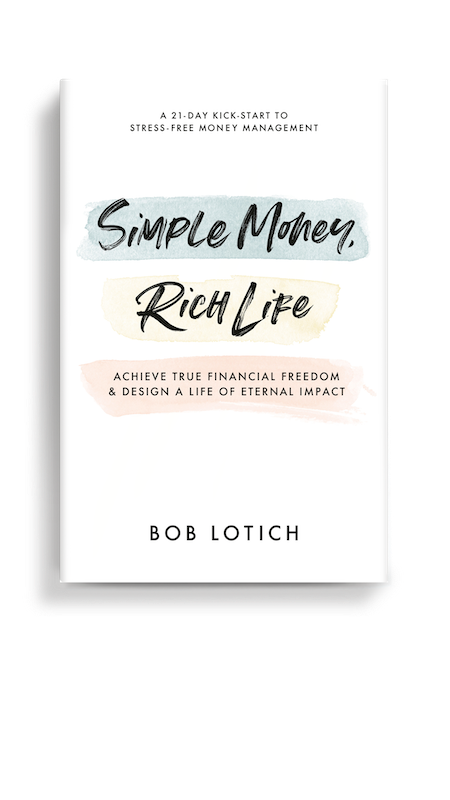 This is the most basic question when it comes to retirement planning – how much do you need to retire?
This is the most basic question when it comes to retirement planning – how much do you need to retire?
You really can’t know if you’re saving enough money for retirement unless you first decide what the target is, and that’s what we’ll show you today.
The Biblical view of retirement
Interestingly, the Bible is pretty quiet on the topic of retirement. The closest it comes to verses that are even remotely related are those involving saving money. For example:
“The wise store up choice food and olive oil, but fools gulp theirs down.” – Proverbs 21:20
The topic of savings does come up from time to time, mostly in the Old Testament, but not retirement. This shouldn’t come as a surprise; as significant a factor as retirement is today, it was virtually nonexistent in biblical times.
For the most part, people worked all of their lives, slowing down with age but stopping only when health prevented them from working. At that point, the operations of the family business – if there was one – would be turned over to the children, who would support the elderly parent until death.
In reality, the New Testament in particular goes in the opposite direction of the modern concept of retirement. In the Sermon on the Mount, Jesus tells us:
“So do not worry, saying, ‘What shall we eat?’ or ‘What shall we drink?’ or ‘What shall we wear?’ For the pagans run after all these things, and your heavenly Father knows that you need them. But seek first his kingdom and his righteousness, and all these things will be given to you as well. Therefore do not worry about tomorrow, for tomorrow will worry about itself. Each day has enough trouble of its own.” – Matthew 6:31-34
Clearly, this is the proper attitude for a Christian to have even today. However, given the reality of life in today’s world – that we no longer rely on having a large number of children who will care for us in our old age – we do need to make a financial provision instead.
Even then, consistent with our faith, we have to plan – but not worry about the outcome. Rather than worrying, as many people do, we need to create a retirement plan that is both reasonable and workable. Perfect should not be a consideration!
Is it possible to determine how much money you’ll need to retire?
If we’re going to set about creating a retirement plan that is reasonable, we must first decide what it is that we want to accomplish. If the retirement plan – plus other income sources – will be sufficient to support us in something close to our current standards of living, then it passes the reasonableness test.
But how can you determine how much money you’ll need to retire?
In truth, there are a host of variables, any one of which could throw the projections out of balance. For example, we can’t know for certain what either inflation or the stock market will do over the coming decades. We can’t even be entirely certain that we will have a steady income over that time that we can tap to fund our retirement plans.
But we can – and we should – make reasonable projections based on the information we have available right now. To do that you’ll have to take some steps – five of them actually.
Read slowly, there are plenty of numbers.
1. Determine how much you’re likely to need to live on
This is the first step in determining how much money you will need to retire. You can go with the conventional wisdom, which is to take your current after tax income, but you should make adjustments based on factors that include:
- Debts you expect to pay off by retirement, including the mortgage on your home
- Higher medical costs – you may find that the Medicare premium, plus a Medicare supplement plan, are more expensive than your current employer subsidized plan
- Higher travel and entertainment expenses
- Lower living expenses overall if you plan to move to a lower cost area
Any number you come up with is unlikely to be perfect, but you do need to come up with a base number just to get started.
For the purposes of our ongoing example here, we’re going to assume that you currently earn $75,000 per year and $60,000 after income taxes.
That will translate to a base cost of living of $5,000 per month.
2. Deduct Social Security and any fixed pensions
When you retire, you can expect to get some help from Social Security. You may also be one of the lucky few who have a defined benefit pension plan paid by your employer. If you do, you can get a pension income projection from your employer.
Projecting Social Security income is more difficult since the Social Security Administration no longer mails out annual earnings summaries that includes the projections. But you can still get this number by using the Social Security Retirement Estimator (sorry, you’ll have to go through all of the steps to get your estimate). It will give you a ballpark estimate of the amount of your Social Security benefit based on your current income and your history of earnings.
Let’s assume that Social Security and your employer pension will provide $2,000 per month. You can deduct this from your basic cost of living estimate of $5,000 per month.
That means you will still have to provide $3,000 per month – or $36,000 per year – from your own personal retirement plan.
3. Calculate your retirement portfolio with the “safe withdrawal rate”
Now that you know you’ll have to provide $36,000 per year in retirement income out of your own retirement resources, we can project how much money you’ll need to have by the time you retire.
There is a convention in retirement planning known as the safe withdrawal rate. It holds that if you withdraw no more than 4% of your retirement savings each year, then you will never exhaust your retirement portfolio.
This is loosely based on the idea that the stock market returns an average of 8% to 10% per year over the very long-term. If you withdraw 4% of your retirement portfolio each year, you can reinvest 4% – 6% each year to cover inflation, and even to grow the portfolio in real terms.
Converting the income requirement to a portfolio number is done by dividing $36,000 by .04 (4%), which means that you will need $900,000 in retirement funds to provide this income level. (A simpler calculation is to divide your annual income requirement by 25, since 100 divided by 4 equals 25.)
So now we know that you will need to come up with $900,000 in order to retire comfortably.
But we’re not done yet.
4. Adjust for inflation
There is a fly in the ointment of retirement planning known as inflation. What ever number you project as your retirement portfolio target, you will need to adjust it for inflation.
The problem is that we have no idea what inflation will do in the future. We do however know what it has done in the past, and that is the best way to make a reasonable estimate.
If you’re 35 years old and you plan to retire at age 65, you’ll need to adjust for inflation over the next 30 years. We can make a reasonable guesstimate of inflation over that period by looking back at what inflation has done in the past 30 years.
This step is made easier when you use the Bureau of Labor Statistics Inflation Calculator. Taking our number of $900,000, we can use the calculator to get a rough estimate for what inflation will do to that number by seeing what is already done since 1986 – 30 years ago.
Based on the calculator, in order for $900,000 to hold up to inflation over the next 30 years, it will have to grow to $2,053,559.19 or more than double the actual amount right now.
Going forward, let’s assume that you will need $2 million by the time you turn 65 in order to have the amount of money that you will need to cover living expenses, and accounting for inflation.
5. Getting from where you are now to where you need to be
You’ll need another calculator in order to figure out how much you’ll need to save each year between now and the time you turn 65. Bankrate has an excellent Retirement Calculator that will help you to figure out where to go from here.
We’ll make the following assumptions in using the calculator:
Percent to contribute: 10%
Annual salary: $75,000
Annual salary increase: 2%
Current age: 35
Age of retirement: 65
Current 401(k) balance: $25,000
Annual rate of return: 9%
Employer match: 50%
Employer match ends: 6%
Based on these numbers, you’ll have $2,004,163 by the time you turn 65, which will put you right where you need to be in order to have the type of retirement you want to have.
In calculating your own retirement portfolio goal, you’ll need to put in information that is specific to your own situation. It may be that you will need to contribute more or less than 10% of your pay, based on your employer match (or if you don’t have one), as well as the amount of retirement assets you already have.
But this exercise will at least give you a reasonable ball park figure as to how much money you’ll need to have saved up for your retirement – and how to accumulate it.
And if it doesn’t look like you’ll make the target, do what Jesus said and don’t worry about it. God provides what we can’t. He may bless you with excellent health and a wealth of ideas that can be turned into business ventures or passive income sources.
Make your best effort, and He’ll meet you more than halfway. We have His Word on it!




